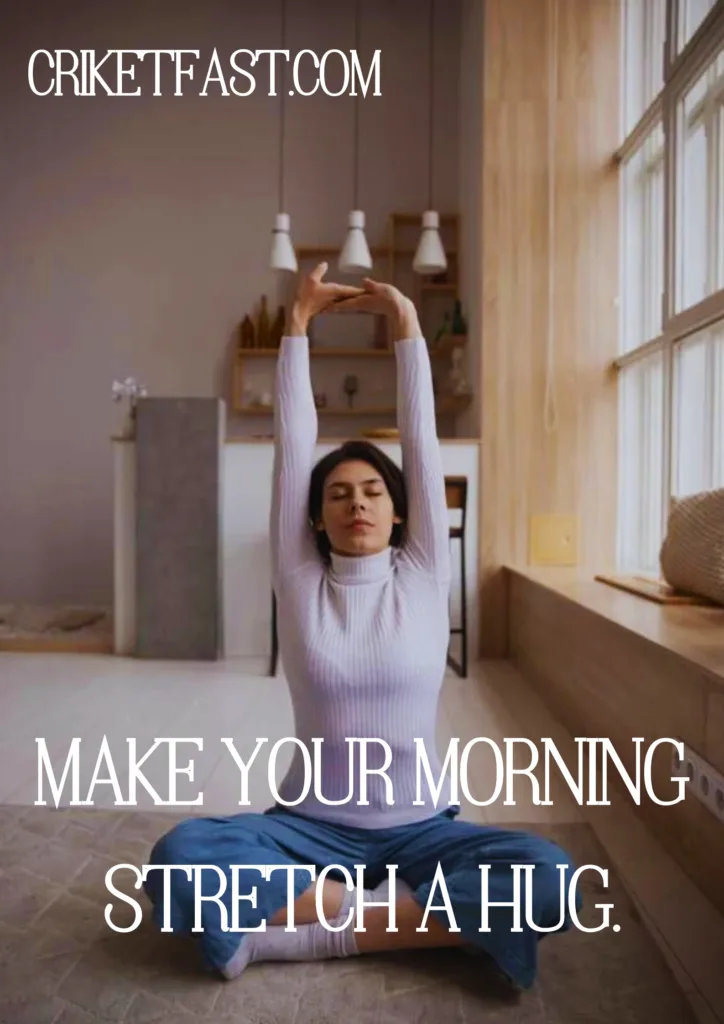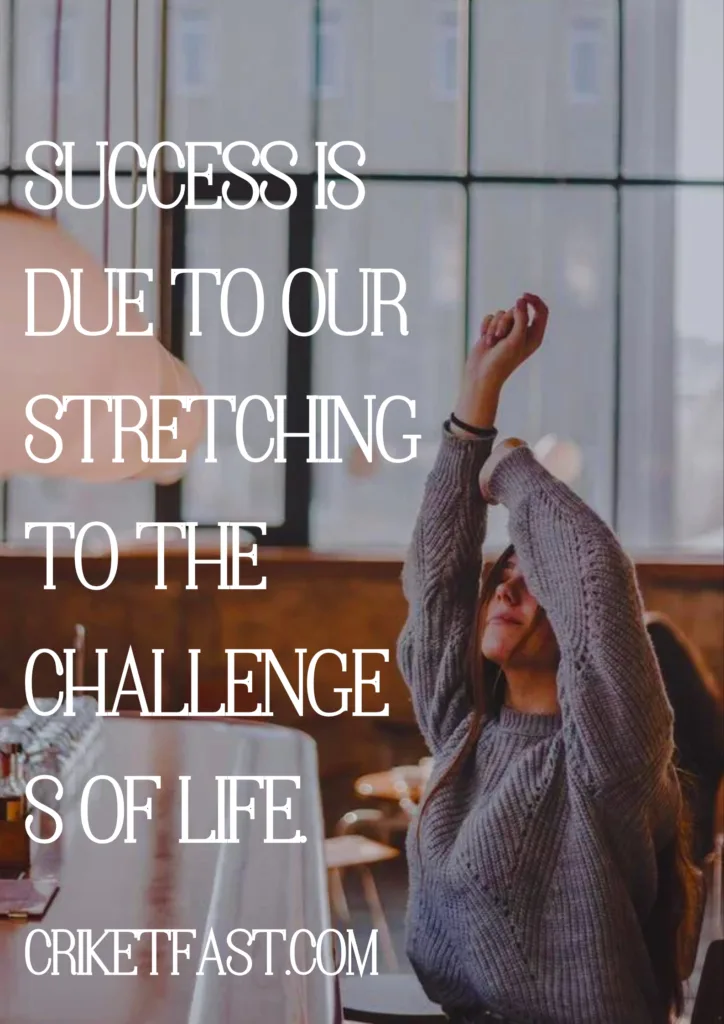Essential Stretches You Need To Do Daily In GYM
Stretches is a movement that involves placing a muscle or group of muscles in a specific position that lengthens and elongates the muscle and improves flexibility and elasticity.
Stretching maintains the flexibility, strength, and health of the muscles, and we need this flexibility to maintain the range of motion in our joints. When we don’t stretch, the muscles contract and get tight. When we call on these muscles for movement, they become weak and can’t stretch.
Effects of Stretching
- Eliminates the loss of mobility that comes with getting older.
- Improve performance in exercise due to increased flexibility.
- Eliminate Injury and Damage Prevention.
- It increases blood flow to the muscles, reducing muscle pain and recovery time.

Indications
- Enhances joint mobility
- Strengthens the back muscles for better posture
- muscle soreness before and after exercise
Benefits of Full Body Stretches
Increases your flexibility
Stretching is a great way to improve flexibility, which is important for your health. Not only does improved flexibility help you perform everyday tasks with ease, but it also helps to slow down the decline in mobility that comes with getting older.
Increases your range of motion
Moving your joint through its entire range of motion allows you more flexibility. Regular stretching can help improve your range of motion, according to one trusted Source.
Static and dynamic stretching are both effective at increasing the range of motion. However, PNF (Proprioceptive Neuromuscular Facilitation) stretching, where a muscle is stretched to its limit, can be more effective for short-term benefits.
Improves your performance in physical activities.
- Doing dynamic stretches before a workout has been proven to help get your muscles ready for the workout.
- It may also help you perform better in a sporting event or workout.
- Trusted Source
Increases blood flow to your muscles
Stretching regularly can help improve your circulation, according to Trusted Source. Increased circulation improves blood flow to the muscles, reducing the amount of time it takes for your muscles to recover and reducing the amount of muscle soreness. This is also known as DOMS (Delayed Onset Muscle Soreness).
Improves your posture
Muscle misalignment is one of the most common causes of poor posture. According to a study published in Trusted Source, a combination of muscle strengthening and stretching of specific muscle groups reduces musculoskeletal pain and promotes proper alignment, which can in turn improve your posture.
Helps to heal and prevent back pain
- Muscle strain can reduce your range of motion, making it more likely that you will strain the muscles in your lower back.
- Stretching can also help treat an existing back injury.
- Regular stretching can help strengthen your back muscles and reduce the risk of muscle strain in the future.

Types of Stretches
Static Stretching
Static stretching is a low-impact, slow-motion exercise that involves positioning your body part in an ergonomic position that lengthens your muscle without causing any pain over a short period (typically 30 seconds).
Frequency and Duration of Static Stretching
It’s not about how long you hold the stretch, it’s about how many times you do it a week.
Each muscle should only be stretched once and held for 5 minutes, broken up into 5 one-minute or 10 exercises of 30 seconds.
The more stretches you do in a week the better the results.
According to some studies, stretching for over three weeks decreased stiffness and increased range of motion by 2-3 degrees per week (2-8-minute stretches increased range of motion compared to 10-minute stretches that decreased range of motion).
For kids, 4 sessions per week of static stretching in PE class resulted in a 17-degree range of motion increase for the hamstring muscles, and 2 sessions per week increased to 9 degrees.
Static stretching can be used as a warm-up. Stretching for under 60 seconds has minimal negative impacts on overall strength and performance. Therefore, static stretching of < 60 seconds can be considered a warm-up.
For general fitness, static stretching is recommended at least twice per week and held for at least 15 seconds before dynamic stretching. Older adults need longer static stretches to see improvements.
For example, 60-second hold stretches increase the range of motion by 1 degree per week compared to 30-second hold stretches.
Dynamic Stretching
Dynamic Stretching is a controlled movement. Unlike ballistic stretching, which involves bouncing movements that can increase your risk of injury, dynamic stretching involves performing a movement and gradually increasing your range of motion with repetitive motions until you reach the end of your range of motion. You can do dynamic stretching standing or while moving.
For people who swim, dynamic stretching exercises mimic the movement of swimming, such as circling your arms before getting into the water. Dynamic stretching is often performed after static stretching.
Some effective exercises
Neck roll
- Stand or sit with your head facing forward.
- Roll your head to the right for a few seconds.
- Feel the stretch of your neck to your trap muscles.
- Roll your head back counterclockwise for another second or two.
- When you reach your left shoulder, pause for a few seconds before continuing the rotation. Finally, stop where you started and roll your head clockwise again.
- Do this for 2–3 rotations.
Shoulder roll
- Stand with your hands at your sides.
- roll your shoulders back in a circle.
- Do 5 rotations, then do 5 rotations to the front.
- Do this 2-3 times.
Arm circles
- Move your hands forward,
- palms facing down, and slowly circle your arms in front of you.
- Begin with small circles and work your way up to larger circles.
- Repeat 20 times.
Conclusion
The main point of the given text is that stretching has numerous benefits, including improving flexibility, increasing range of motion, enhancing performance in physical activities, increasing blood flow to muscles, improving posture, and helping to heal and prevent back pain. The text also discusses different types of stretching, such as static and dynamic stretching, and provides examples of effective stretching exercises.
Read: The Best Leg Press Workouts In The Gym

FAQS of
Q: Can stretching help with muscle soreness?
A. Yes, stretching can reduce muscle pain. Stretching increases blood flow to your muscles and relieves tension.
Q: Is it necessary to stretch every day?
A. Stretching isn’t something you need to do daily, but it’s an important part of your daily routine that can help improve flexibility and overall health.
Q: What are some common stretches?
A. Toe touches, Hamstring Stretches, Squat Stretches, and Shoulder Stretches are some of the most popular stretches.
Q: What are the benefits of stretching?
A. There are several benefits to stretching, including increased mobility, better circulation, decreased muscle contractions, and better posture.

